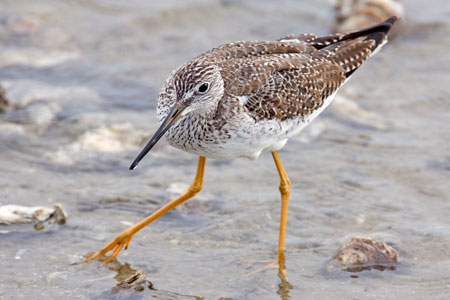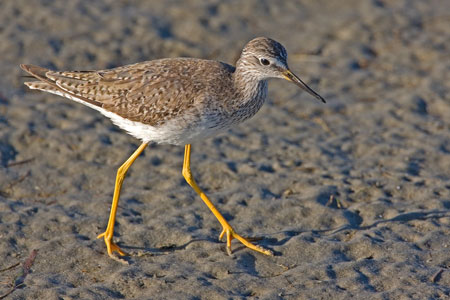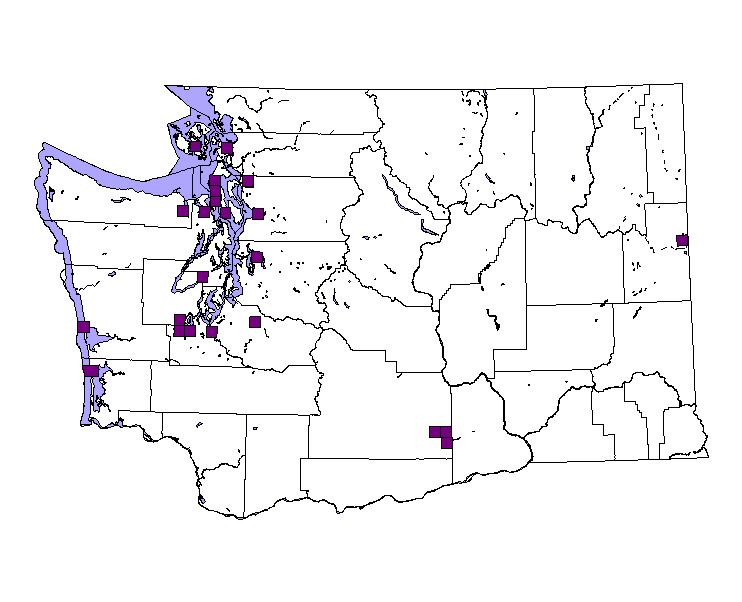
NatureMapping Animal Facts
Lesser Yellowlegs
|
Lesser Yellowlegs (Tringa flavipes)
Calls:
The call is a two-noted short whisted "tu-tu.". Range / Habitat: Most of these shorebirds winter in South America, but a few can be found in Florida and on the east coast. The nesting territory ranges from Alaska eastward to the Canadian provinces, as well as in northern British Columbia. Click the range map to learn more about the distribution of Lesser Yellowlegs in Washington.  Photo courtesy of Natures Pics.
Photo courtesy of Natures Pics.
Diet: Lesser Yellowlegs eat aquatic and terrestrial invertebrates, especially flies and beetles. They occasionally feed on small fish and seeds. They are active foragers, walking through shallow water and picking up prey on or below water surface. They can be seen dashing after prey on land. Behavior: Lessers forage in shallow water outside the breeding season, picking at prey on or just below the water's surface. They are less likely than Greaters to run after their prey, but more likely to scythe their bills back and forth in the water stirring up prey like an avocet. The Lesser Yellowlegs bob the front half of their bodies up and down, a characteristic behavior of this genus. The two-note flight call, a whistled "tu-tu", is the most common vocalization heard. The alarm call is a sharp "kip." Migration: Lesser Yellowlegs are long-distance migrants. They follow the classic shorebird migration pattern of traveling north concentrated in the interior of North America, and traveling south spread across the continent. Lessers return to the same general breeding area in successive years and migrate to the southernmost coasts of the US south to South America. (source: BirdWeb) Nesting: Nest is a depression in ground or moss, lined with dry grass, decayed leaves, spruce needles or other debris. The nests are on dry, mossy ridges, next to fallen branches and logs, and found underneath low shrubs. Both parents share incubation duties, and the 4 eggs hatch in 22-23 days (3 weeks). The young are downy and able to walk after hatching. The young leave the nest soon after hatching and are able to feed themselves. Both parents care for and aggressively defend the young. The female usually leaves about 11 days after the young hatch, while the male stays with the chicks until they can fly, about 23-31 days. Pairs raise only one brood per season.
Did you know?

Lesser Yellowlegs More information:
|
